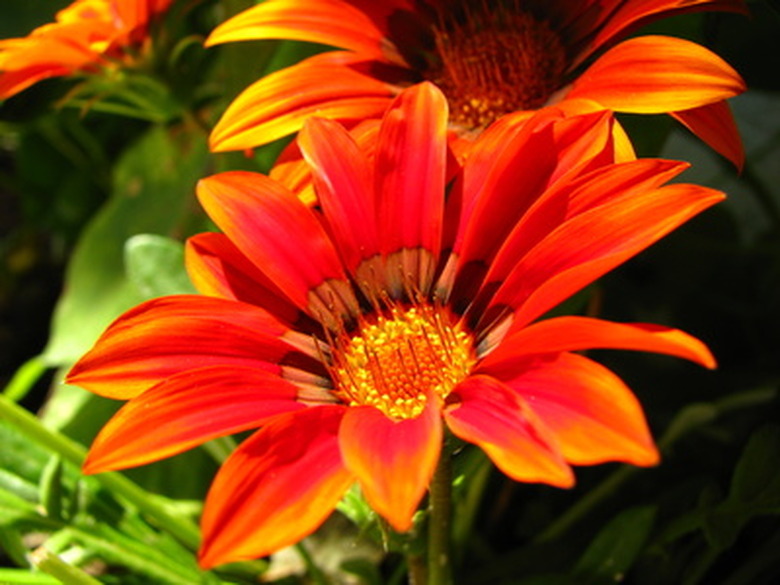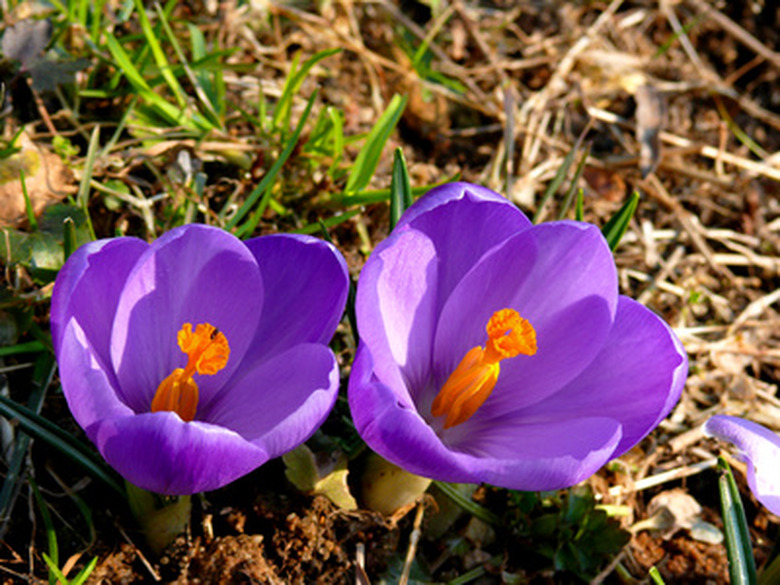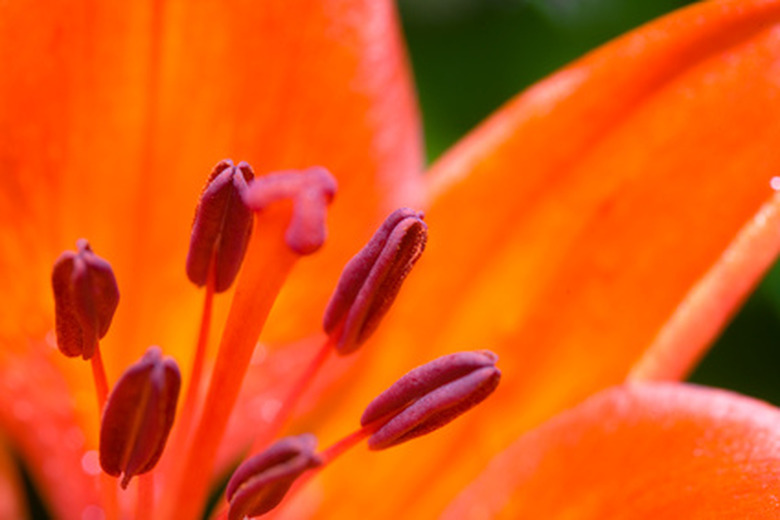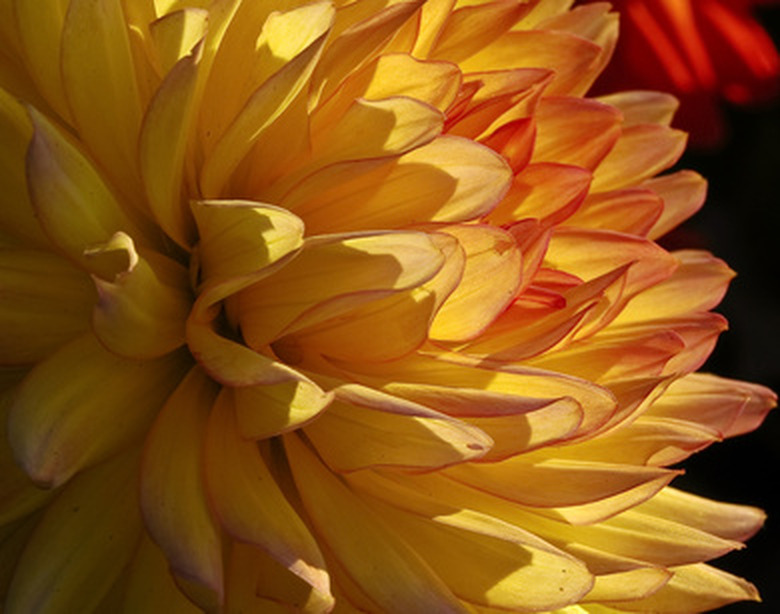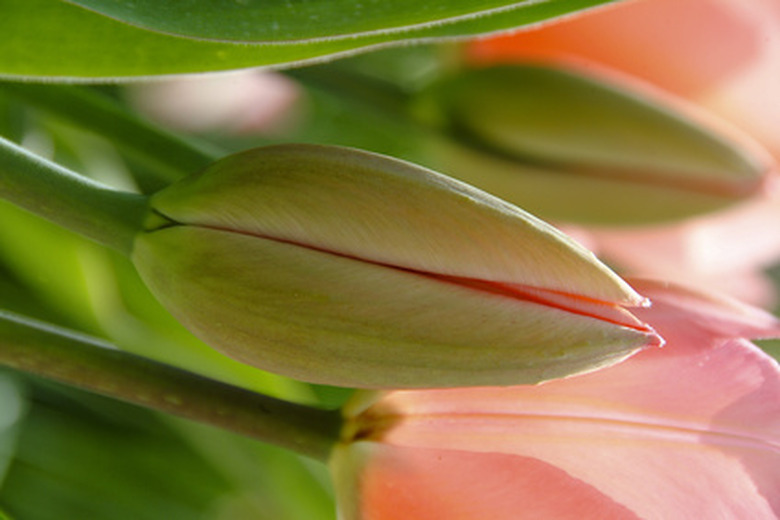Parts Of A Complete Flower
Flowers are sexual organs that exist so that a plant can produce seeds and reproduce itself. Bright colors and fragrances of flowers attract birds and insects necessary to carry pollen from one flower to another. A complete flower has four concentric whorls or rings of organs that are modified leaves. From the center to the outside of the flower, these parts are the pistol, stamen, petal and septal. If a flower lacks one of these parts it is incomplete. Since complete flowers have all four whorls, they are bisexual.
Pistil
The pistil is the long stalk arising from the center of a flower and is sometimes shaped like a bowling pin. The pistil is the female reproductive organ; it has three parts, an ovary, the style and the stigma. The round base of the pistol is the ovary; it contains one or more ovules. When they're fertilized, eggs inside the ovules develop into seeds. The style is that part of the stalk that connects the ovary to the stigma. The sticky knob at the end of the stalk is the stigma.
- Flowers are sexual organs that exist so that a plant can produce seeds and reproduce itself.
- The round base of the pistol is the ovary; it contains one or more ovules.
Stamen
The male reproductive organ, the stamen, circles the pistil from the center of the flower. The stamens have a stalk called the filament. The anther atop the stalk produces microscopic grains of pollen. Each grain of pollen produces the sperm, the male sex cell. The filament holds the anther into position so that the wind, insects, bats or birds can disperse the pollen.
Petals
The petals are the brightly-colored portion surrounding the pistol and stamens. The petals attract the attention of birds and insects necessary for pollination. They sometimes contain perfume as well as produce nectar. The layers of flower petals are collectively called the corolla. Plants are often identified by their number of petals.
- The male reproductive organ, the stamen, circles the pistil from the center of the flower.
- The petals are the brightly-colored portion surrounding the pistol and stamens.
The embryo of a monocot produces one cotyledon or "seed leaf" and has petals in multiples of four or five. The cotyledon receives nutrients until the seed is ready to produce true leaves.
The embryo of a dicot produces two cotyledons and has petals in multiples of three.
Sepals
Beneath the petals, the sepals, usually green and leaf-like, form a temporary protective cover over an unopened flower. The sepals fold back to allow the petals of a flower to unfurl. The sepals are collectively called the calyx. Monocots have sepals in multiples of four or five; dicots have sepals in multiples of three.
- The embryo of a monocot produces one cotyledon or "seed leaf" and has petals in multiples of four or five.
- The embryo of a dicot produces two cotyledons and has petals in multiples of three.
